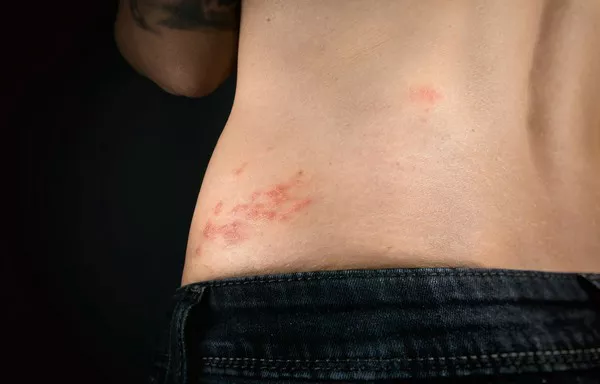Shingles, also known as herpes zoster, is a painful skin condition caused by the reactivation of the chickenpox virus. The virus stays dormant in the body after a person recovers from chickenpox and can reactivate years later, causing shingles. If you or someone you know has experienced shingles, it is important to understand how long the condition lasts and the factors that can influence the recovery process.
In this article, we will discuss the stages of shingles, how long it generally takes to heal, and ways to manage the symptoms to speed up recovery.
What is Shingles?
Before diving into how long shingles last, it’s helpful to understand what it is. Shingles occurs when the varicella-zoster virus, which causes chickenpox, reactivates. The virus lies dormant in nerve tissue after a person recovers from chickenpox and can be triggered by factors such as stress, weakened immunity, or age.
Shingles typically starts as a painful, burning sensation on one side of the body. It is followed by the appearance of a red rash and blisters. The rash often forms in a band-like pattern on one side of the torso or face, depending on which nerves the virus affects.
How Long Does Shingles Last?
The duration of shingles can vary from person to person. However, in general, shingles typically last between 3 to 5 weeks. The entire process can be broken down into different stages.
Stage 1: The Prodromal Stage (1-5 Days)
Before the rash appears, many people experience a period called the prodromal stage. During this phase, which lasts between 1 to 5 days, individuals may notice tingling, itching, or a burning sensation in the area where the rash will develop. This is caused by the virus reactivating and affecting the nerves.
Some people also experience flu-like symptoms during this stage, including fever, headache, and fatigue. However, these symptoms are often mild and can be mistaken for other illnesses.
Stage 2: The Rash and Blisters (7-10 Days)
After the prodromal stage, the rash typically appears. It starts as red spots, which quickly turn into fluid-filled blisters. These blisters are often very painful, and the rash typically forms in a band or strip on one side of the body or face, following the path of the affected nerve.
This stage usually lasts between 7 to 10 days. During this time, the blisters continue to grow and may rupture, leaking fluid. As the blisters dry out, they form crusts.
Stage 3: Scabbing and Healing (2-4 Weeks)
After the blisters have crusted over, the healing process begins. This stage can last from 2 to 4 weeks, and the scabs gradually fall off as the skin heals. The pain typically starts to decrease during this phase, but some people may still experience discomfort as the skin heals.
While most people see significant improvement during this stage, some may continue to experience pain, even after the rash has healed. This condition is called postherpetic neuralgia (PHN) and can last for months or even years in some cases.
Factors Affecting How Long Shingles Last
Several factors can influence how long it takes for shingles to go away. These factors can affect the severity and duration of the infection.
Age
Older adults, especially those over the age of 50, tend to experience more severe cases of shingles and may have longer recovery times. This is because the immune system weakens with age, making it harder for the body to fight off the virus.
Immune System Function
People with weakened immune systems, such as those with HIV/AIDS, cancer, or who are undergoing chemotherapy, may have a longer recovery time. A compromised immune system is less able to control the spread of the virus, leading to a prolonged illness.
Treatment
Early treatment with antiviral medications can significantly shorten the duration of shingles and reduce the severity of symptoms. The sooner a person starts antiviral therapy, the less likely they are to experience prolonged pain or complications.
Complications That Can Prolong Shingles
While most cases of shingles resolve on their own within a few weeks, complications can arise that may delay the healing process.
Postherpetic Neuralgia (PHN)
One of the most common complications of shingles is postherpetic neuralgia (PHN), which occurs when the nerve pain continues long after the rash has healed. PHN can last for months or even years, and the severity of pain can vary. In some cases, it can be so intense that it affects a person’s quality of life.
The risk of developing PHN increases with age, and people over 60 are more likely to experience this complication.
Eye Involvement (Ophthalmic Shingles)
If the shingles rash appears around the eyes, it can lead to more serious complications, such as vision loss. Ophthalmic shingles require immediate medical attention to prevent long-term damage.
Bacterial Infections
In some cases, the blisters from shingles can become infected with bacteria. If this happens, the healing process may take longer, and additional treatment with antibiotics may be required.
How to Speed Up Recovery
While shingles usually resolve on their own, there are several ways to manage the symptoms and speed up recovery.
Antiviral Medications
Antiviral drugs like acyclovir, valacyclovir, and famciclovir are commonly prescribed to treat shingles. These medications help to reduce the severity of the symptoms and can shorten the duration of the illness if started early. It is important to begin treatment as soon as possible after the rash appears for the best results.
Pain Relief
Pain management is a crucial part of shingles treatment. Over-the-counter pain relievers, such as ibuprofen or acetaminophen, can help alleviate mild pain. For more severe pain, doctors may prescribe stronger medications, including opioids or anticonvulsants like gabapentin, which can help relieve nerve pain.
Topical treatments, such as lidocaine patches or calamine lotion, can also provide temporary relief for the itching and burning associated with the rash.
Rest and Hydration
Getting plenty of rest and staying hydrated is essential for recovery. The body needs energy to fight off the virus, so it is important to take care of your overall health. Drink plenty of fluids to stay hydrated and avoid further irritation to the skin.
Avoid Scratching
Although it can be tempting to scratch the rash, doing so can cause the blisters to become infected and slow down the healing process. Keeping the affected area clean and dry can help prevent infection and reduce the risk of scarring.
Stress Management
Since stress is a common trigger for shingles outbreaks, managing stress levels can help reduce the risk of future occurrences. Meditation, deep breathing exercises, and relaxation techniques can be helpful for stress management.
When to See a Doctor
If you suspect you have shingles, it is important to see a doctor as soon as possible. Early diagnosis and treatment can help shorten the duration of the illness and reduce the risk of complications. If you experience any of the following symptoms, seek medical attention immediately:
- The rash affects the eyes or the face
- Severe pain that does not improve with over-the-counter medications
- The rash becomes infected or has pus
- You develop difficulty breathing or swallowing
Conclusion
Shingles can be a painful and uncomfortable condition, but most cases resolve within 3 to 5 weeks. The healing process involves several stages, including the appearance of a rash, the formation of blisters, and eventually scabbing and healing. Several factors, such as age, immune system function, and treatment, can affect how long shingles last.
While shingles typically go away on their own, antiviral medications and pain relief options can help reduce the severity of symptoms and speed up recovery. Taking care of your overall health, managing stress, and seeking early treatment can also help you heal faster.
If you experience any complications, such as postherpetic neuralgia or eye involvement, be sure to consult with a healthcare professional for further guidance.
Related topics:


























